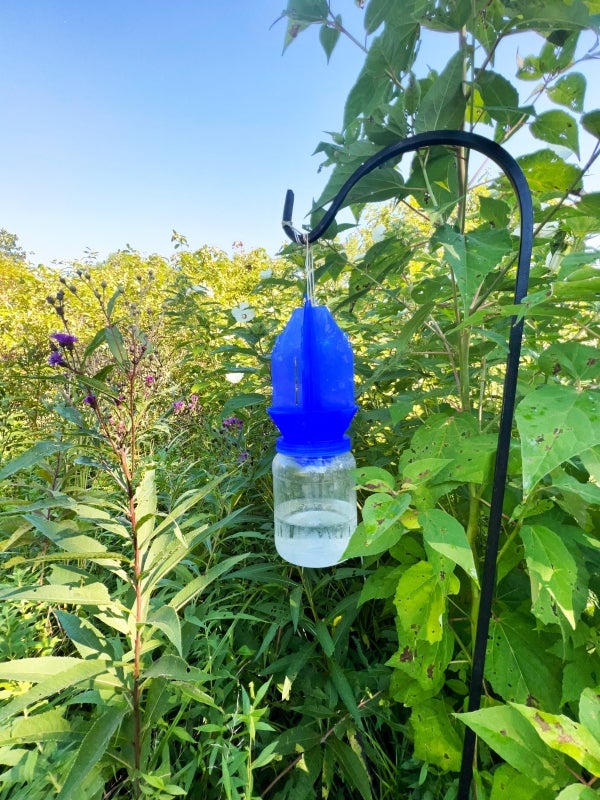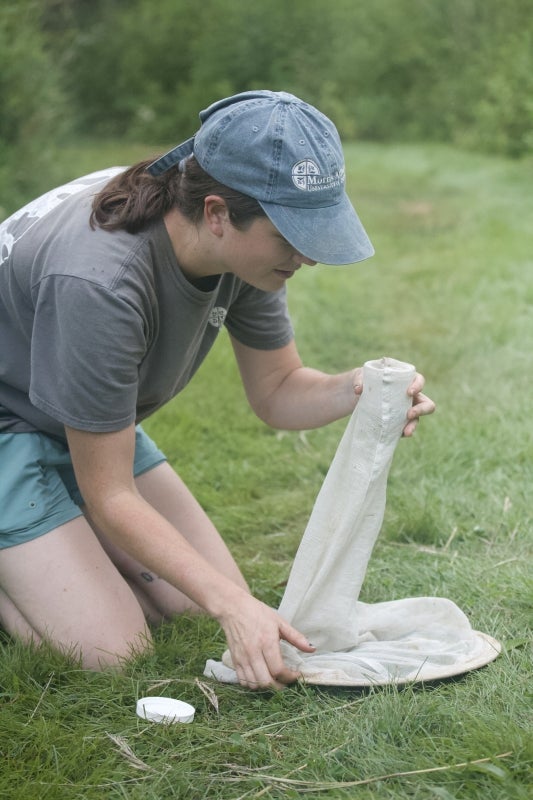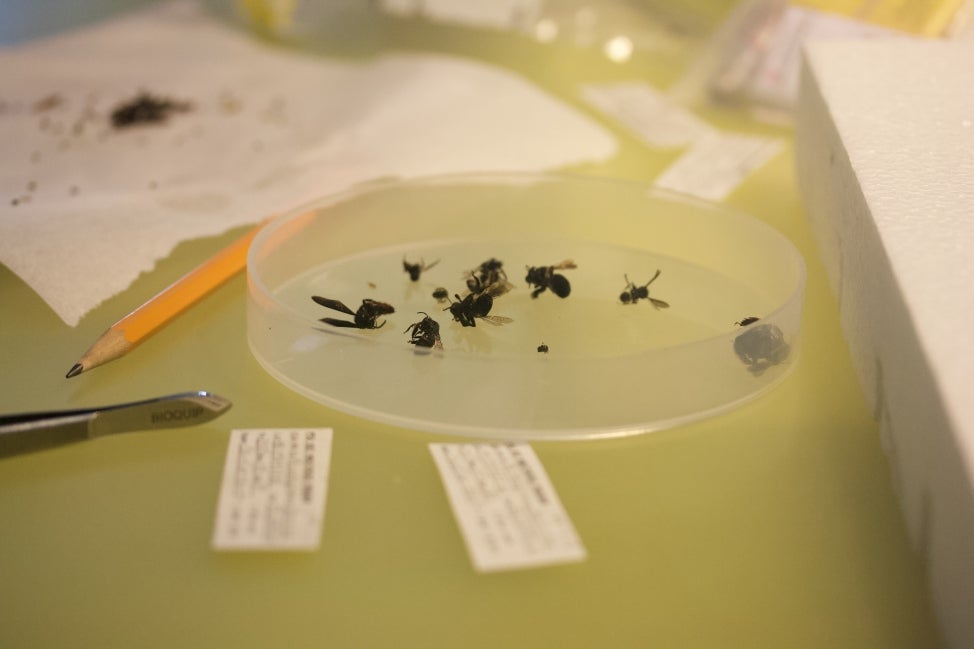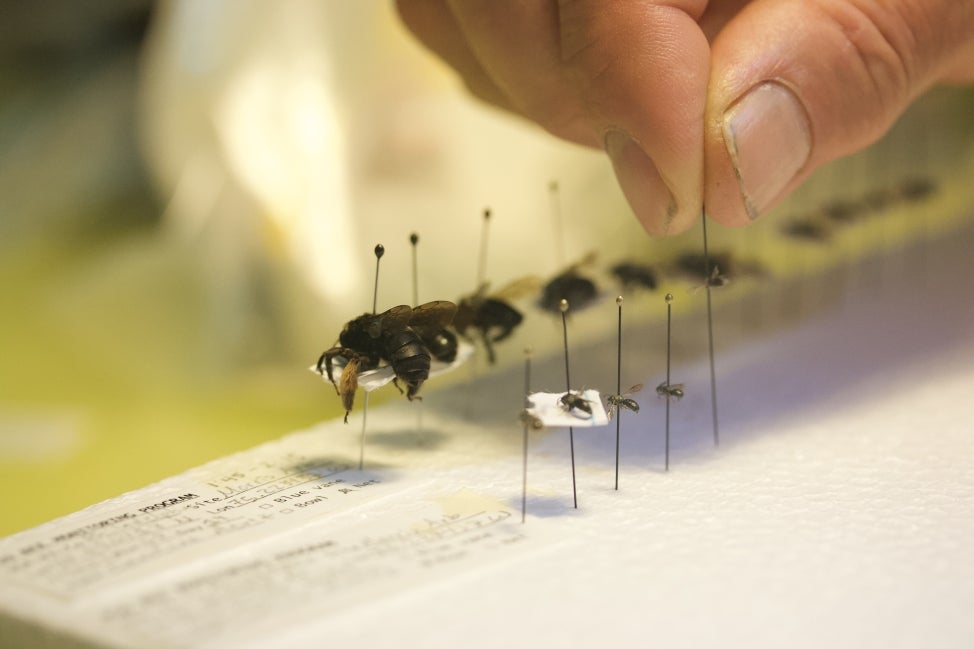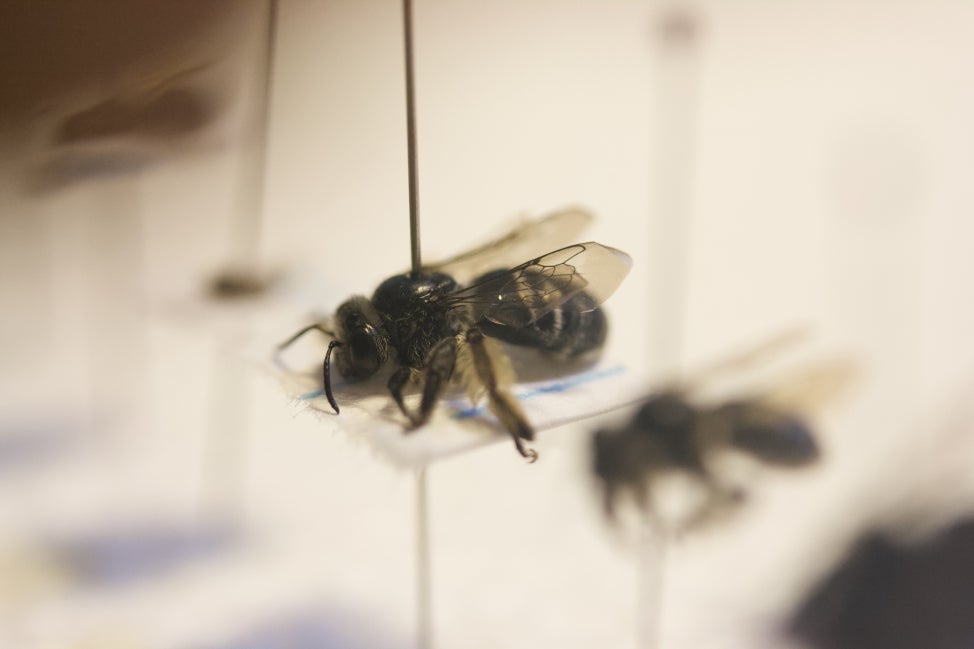Blog

The Pennsylvania Bee Monitoring Program at the Morris Arboretum
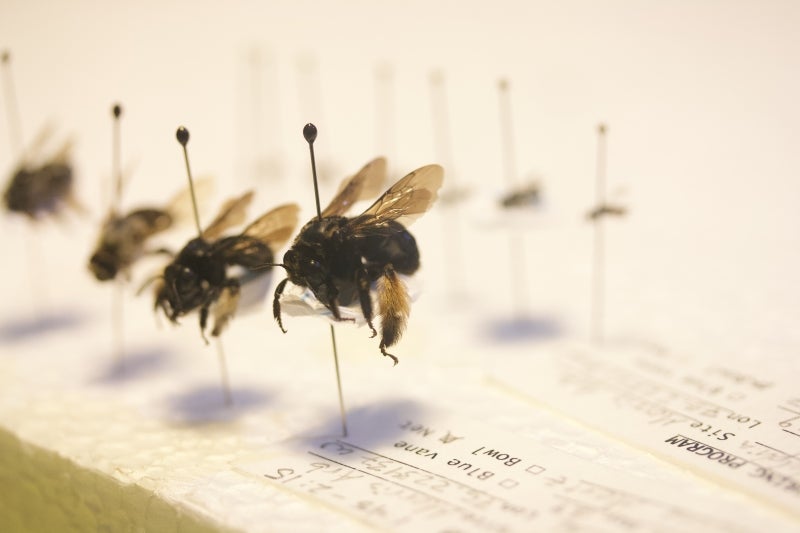
Credit: Ryan Drake
Have you noticed a blue vane trap hanging around the Morris Arboretum? It's part of the Pennsylvania Bee Monitoring Program, which studies regional bee variance across the state. The decline in populations worldwide has called attention to better understand the variation, distribution, and abundance of wild bee pollinators.
The bee monitoring program uses three different trapping techniques in order to catch the widest variety of bee species. The blue vane trap hangs two to three feet from the ground, attracting bees with its bright blue color. Nine plastic bowls painted either white, blue, or yellow are laid on the ground in a transect, closer to the populations of ground nesting bees, which make up over 70% of Pennsylvania's bee populations. The final trapping technique is netting, where monitors use butterfly nets to catch any other unique bees they can find in the area. These techniques combined aim to allow monitors to observe the fullest range of wild bee species in an area so they can track changes in population sizes and variety in Pennsylvania.
